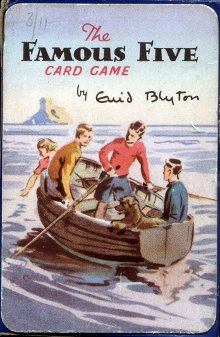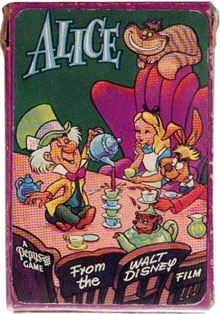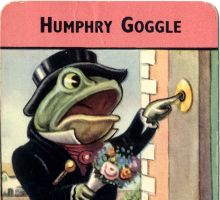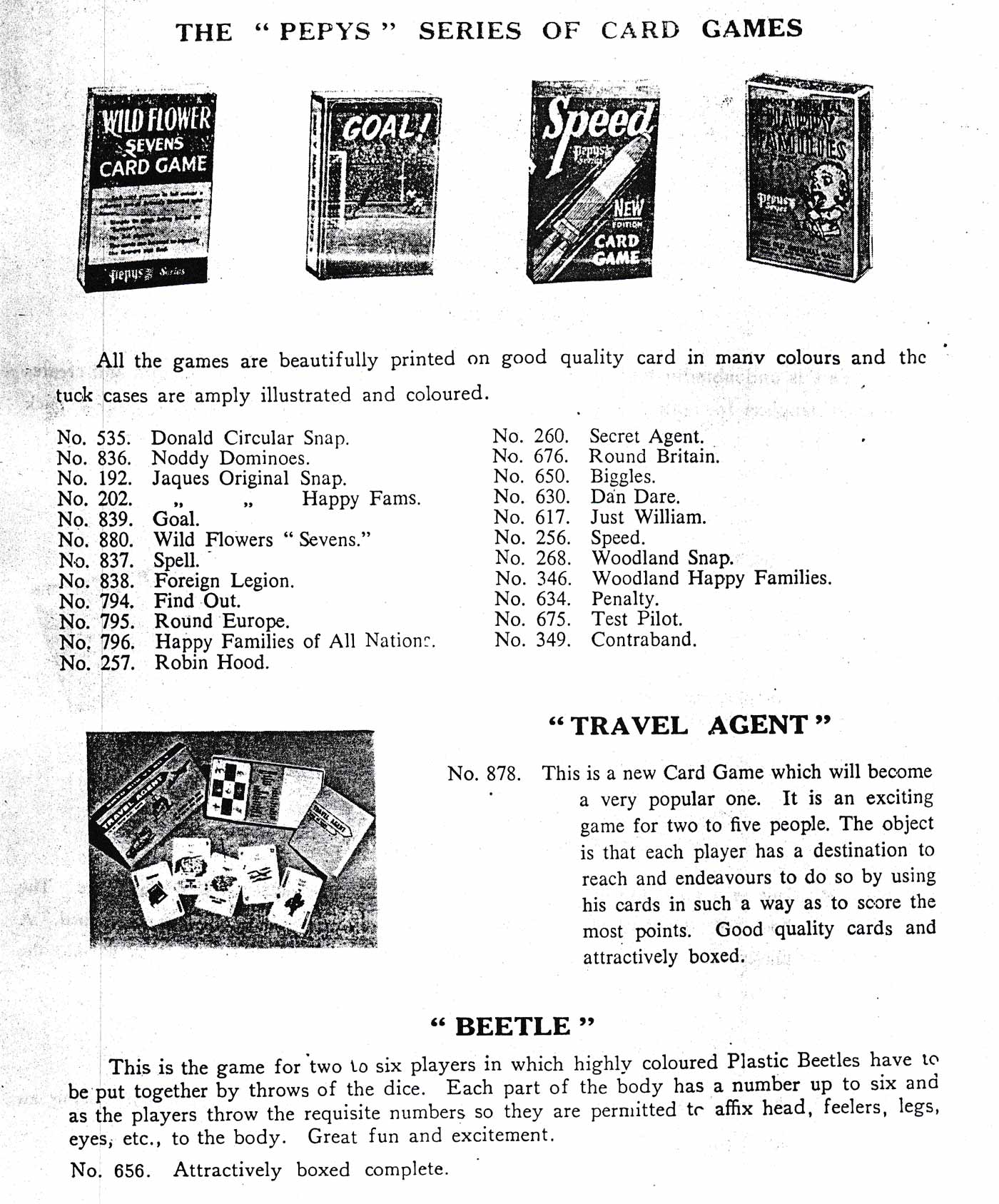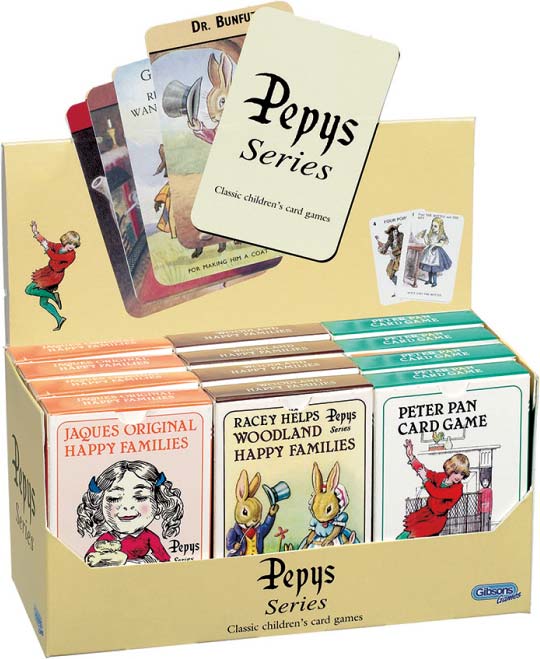Pepys Games
The Story of Pepys Games by Rex Pitts
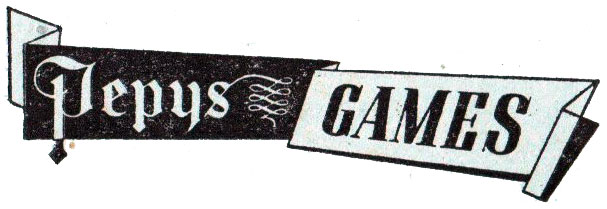
The Story of PEPYS CARD GAMES
by Rex Pitts, author of "Pepys, the Story of the Company and its Games".
HOW IT ALL BEGAN
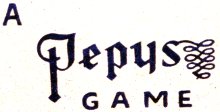
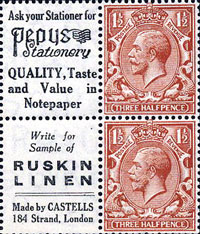
Above: Castell ads in stamp booklets.
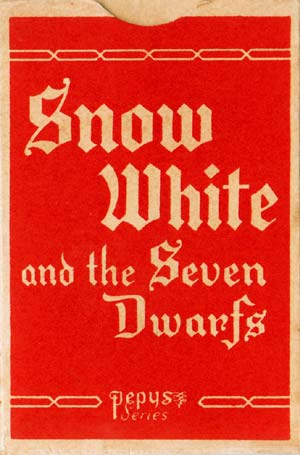
Above: ‘Snow White’ 1937.
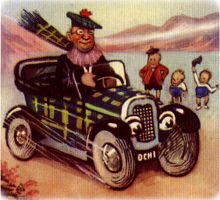
Above: ‘Belisha’, 1937.
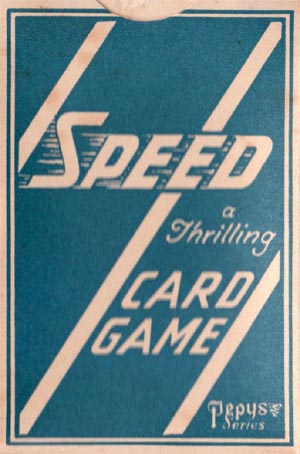
Above: ‘Speed’, 1937.
Castell Bros was founded in 1878 in Warwick Lane in sight of St. Paul’s Cathedral, by Henry Castell and his younger brother John. The choice of “Pepys” for a brand name turned out to be a fortuitous one as they went on to become a very well known manufacturer of diaries as well as the maker of so many wonderful card games that were enjoyed by many of us in our youth - as indeed they still are!
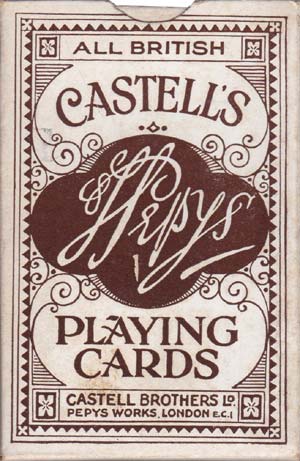
Above: Castell’s Pepys pack made by Waddingtons.
See also: Bridge Scoring pad►
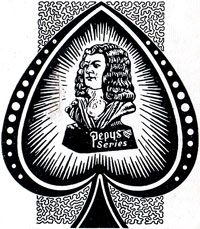
Above: Pepys Series pack published by Wm Collins Sons & Co
Castell Bros Ltd were located at 55 Clerkenwell Road London, E.C. in 1908 when they submitted a Provisional Application for a new type of Whist Token (view online). Most likely they didn’t proceed with manufacture, but as wholesale stationers they would have been considering selling playing card-related goods. However, advertising during the 1920s & early 30s does not mention playing cards (see example).
In 1931 Henry Castell’s two grandchildren sold the Castell Brothers Ltd business to Amalgamated Press, who then sold it on to William Collins Sons & Co Ltd, the publishers, who transferred the business to Glasgow at 107 North Wallace Street.
When Castell Bros decided to introduce card games into their range they were printed for them by Alf Cooke Ltd of Leeds. When Alf Cooke (also called Universal Playing Card Co) was taken over by Waddingtons in 1971, they continued to print subsequent games until eventually Castell Bros turned to Carta Mundi of Belgium to print for them in around 1975. When Waddingtons sold their games division to Hasbro in 1994 the remaining stock was sold off including a quantity of Pepys games and rules books.
THE BEGINNING OF THE CARD GAMES
In 1937, the Walt Disney film “Snow White and the Seven Dwarfs” made a big impact at the first showing in America. Pepys thought it would be a good idea to produce a Snow White card game to tie in with the general release of the film in the UK in 1938. Artists were despatched to sit through endless showings of “Snow White” making drawings for the cards and Kenneth Collins, Castell Bros managing director, sat down to write the rules for the game.
Within a few weeks the first late 1937 print run was sold out and orders were on the books for five times that number again.
In the meantime Castell Bros had, I believe, acquired the card games that belonged to Kum-Bak Sports. I also strongly suspect that they had also been printed by Alf Cooke for Kum-Bak. The first was Kargo, which was originally produced by Gaymes Ltd and later taken over by Kum-Bak. Jack of All Trades was also published by Kum-Bak in 1932. There was one more card game which I think was in preparation for Kum-Bak which Pepys later issued under their own brand name; but more of that later. Although Jack of All Trades was advertised by Pepys in the rules books of contemporary games I have never seen it with the Pepys name on it, or any mention of Castell Bros, perhaps it was only sold to use up old stock they had inherited.
While they were waiting for Snow White to be released Pepys didn’t waste any time and prepared to follow up what they hoped would be a success with other games. Belisha was also released in 1937 and Progress was designed and ready to go in 1938, both drawn by the same unknown artist, at the top end of the range and in fancy padded boxes with high quality rules books, to sell at 2/6, a pretty high price for the time. When they were released, as was hoped, they began to sell well. They were both produced in two different card back colours. Progress in purple or plum backs with boxes printed in the same colour and Belisha in red or blue backs and additionally in a double sized padded box with a pack of each colour. Also ready was a game that would come to represent the essence of Pepys and become one of the most successful card games ever produced by any British manufacturer. This was Speed, and at first it was issued only in two-tone colour to keep the price down to a very low 1/- per pack. Later, of course, Speed was issued in full colour.
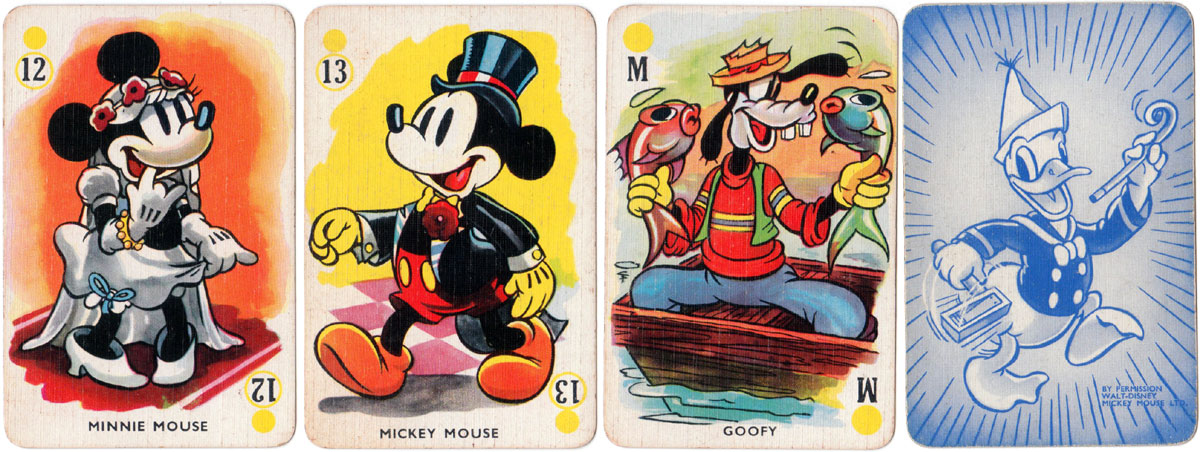
Above: Mickey's Fun Fair, 1939→
As the association with Walt Disney had proved to be such a good idea further card games based on Walt Disney films were planned for release in 1939. Mickey’s Fun Fair was unusual in being a double box containing one red backed pack and one blue backed. Dumbo was issued in both red and blue backed versions, and was only identified as Pepys on the box, not in the rules booklet, although it was advertised in other games rules booklets. Shuffled Symphonies was also issued in red and blue versions, but was completely anonymous. More Disney games were to follow as we shall see.
Review in “Games and Toys” February 1939
Castell Brothers Ltd are one of the most prolific publishers of card games in this country. Here is a short description of some of their latest publications.
“Snow White and the Seven Dwarfs” is a game founded on the Walt Disney film and produced by permission of Walt Disney-Mickey Mouse Ltd. All the charm of these delightful characters is reproduced in full colour from Walt Disney originals. It retails at 1s and is a game which can be played by two or more players.
“Pilgrim’s Progress” is known to most children and adults and the game of “Progress” has been inspired by this story. The full pack of 52 cards forms a picture story of Bunyan’s well-known book. It is a simple family game, which is both instructive and enjoyable and has all the drama and thrills of the book on which it is founded. The selling price is 2s 6d which includes a book of rules and a résumé of Bunyan’s great work.
Most people obtain a thrill from speed in any form, and Castell Brothers Ltd have catered for this in their card game “Speed.” Famous racing cars, ships, railway trains, aeroplanes and race horses are here used in this pastime. All the family can join in with equal enjoyment and “full speed ahead” can be enjoyed without worry or care. It is an amusing and topical game and at 1s offers extremely good value.
Is there anyone to whom the name Belisha does not mean something? A card game based on “Safety First” should and has proved popular. This game is known as “Belisha” and is published at 2s 6d. It is interesting, full of laughs and thrills and really points the way to road safety by illustrating the dangers of the road. It takes you on a tour of England and Scotland and the cards show many of their most lovely beauty spots. The play is based on the popular game of Rummy, yet is different enough for it to be interesting and original.
Other popular card games by this firm include “Kargo” card golf for golfers and non golfers and “Jack of All Trades.” These are all published in the “Pepys” series. The firm’s showrooms and headquarters are situated at 8 Bridewell Place, London, E. C. 4 but during the period of the British Industries Fair they will be exhibiting the complete collection of their productions at The Waldorf Hotel, Aldwych. Incidentally it is interesting to note that Castell Brothers Ltd are continuing to advertise “Snow White,” “Belisha,” “Speed” and “Progress” in the coming months. Their bold advertising campaign for “Snow White” is an example of what this type of publicity will accomplish. Last year the result of 1 year’s sales was a quarter million packs in excess of the previous year, which in itself was a good one.
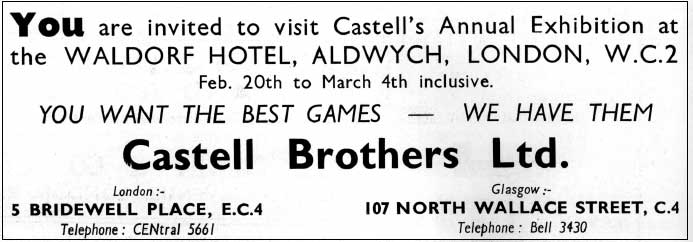
THE PEARS SOAP PROMOTIONS
When the Snow White card game was used to promote Pears Soap, as far as I know there was no special wrapping, only the usual glassine wrap for the cards inside the box with a gold seal printed in red. There was not even an advertisement for the soap on the box or the rules booklet. By the time Shuffled Symphonies was used for a similar promotion the rules booklet had been printed with a Pears advertisement on the back cover. One of the cards from the pack was outside the box and the whole thing was wrapped in cellophane. A warning was printed on the end of the box to tell buyers that this loose card would be needed as it was part of the pack.
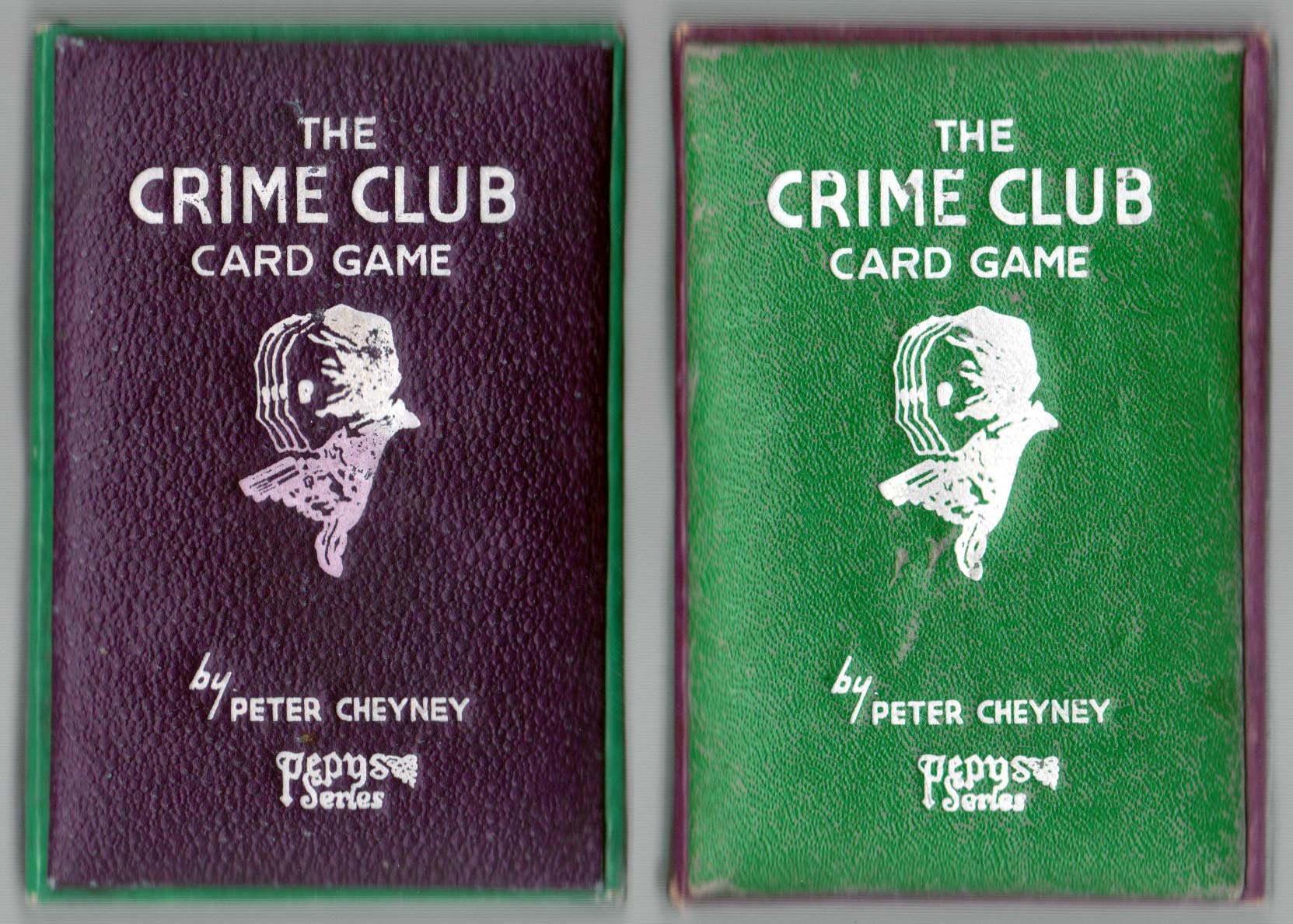
Above: Crime Club►
Holidays at Home
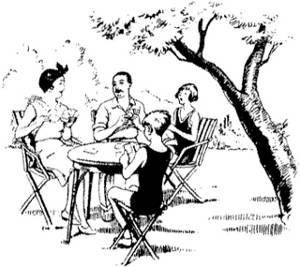
A 1944 advertisement read: “Pepys Card Games are a good substitute for the holiday entertainment voluntarily given up this year in the cause of the country. Very restricted supplies only are available...” (click image to see more)
Picture Dominoes
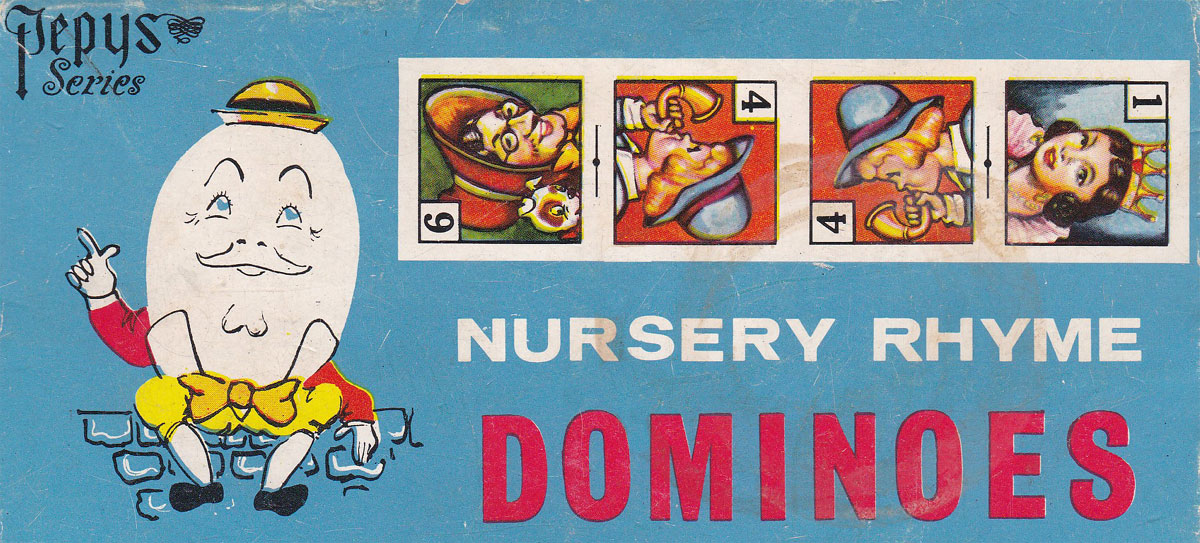
Pepys published a total of 8 pictorial dominoes games►
Board Games
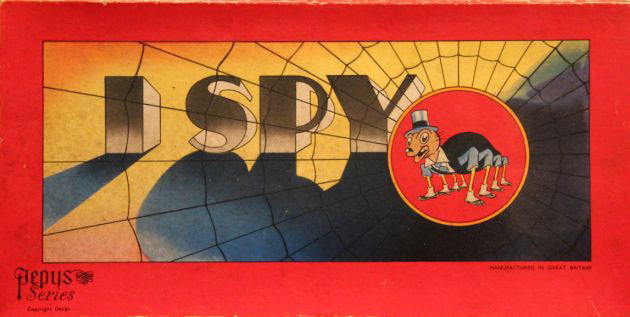
Pepys published a number of exciting board games►
1939 also saw the release of Famo which is the game I suspect was already planned for Kum-Bak, the format is so similar to Jack of all Trades. It’s a Goal is anonymous but I know it was registered at Stationer’s Hall to Castell Bros in July 1939. Crime Club (one of my favourites) produced in both green and purple backed versions seems to come in either green or purple boxes at random judging by the many packs I have seen.
THE START OF THE WAR
When war was declared, things at first seemed to continue as normal. A card game based on MGM’s most popular 1939 film releases, Film Fantasy, was issued (registered Sept 1939), at first anonymously, maybe because it was connected with another film studio when Pepys had such strong links with Walt Disney. Then, at the end of the year two games were rushed out to reflect the troubled times. The first was Victory a splendid game with caricatures of British and German leaders which was published anonymously but registered to Castell Bros in December 1939. The other game, Vacuation, about evacuating young children away from target zones was also anonymous but registered at the same time to Castell Bros.
Early in 1940 Pepys issued Peter Pan, nothing to do with the Disney film which didn’t come out until 1953, at first in a green backed version but later with red backs. Also appearing was Gulliver’s Travels, which was anonymous but registered to Castell Bros in March 1940. This was based on the full length cartoon film Gulliver’s Travels produced and directed by Max and Dave Fleischer for Paramount Studios, another rival film studio as you can see. Panda’s Party, another anonymous issue whose box design is so similar to that of Gulliver’s Travels that it must have come from Pepys. Later came The Wizard of Oz, anonymous but registered to Castell Bros in May 1940, an MGM film this time. I also believe that they issued in mid 1940 They're Off and England Expects. Although I can offer no definite proof of this they both shout Pepys at me because the card quality and artwork are very similar and the box dimensions and the board are right. In addition they both have the characteristic extra title card attached to the box, an unusual feature at this time in Britain. Pinocchio came a bit later, in August, and this was cooperation with Disney. Kargo and Peter Pan were issued in ordinary tuck boxes instead of the hinged padded lid type used previously. In fact, by 1941, wartime paper restrictions were so bad that Pepys were only publishing five games namely: - Speed, Peter Pan, Kargo, Dumbo and Belisha. Advertisements in “British Stationer” for July, August and September 1944 informed the trade that only these titles were available and orders would be rationed.
LOOKING FORWARD
1947 saw the issuing of Express in its 1st edition with pre-nationalisation railway companies, and it was unusual in having fold-out railway stations (see Express 2nd edition►). It was issued in both red back and blue back versions with boxes to match. International Football Whist was another unusual game which had a paper football pitch and a little metal football as well as the cards.
Also in this year more Disney card games made their appearance. Mickey and the Beanstalk, which was devised by Ern Shaw, also had a special fold-out piece, this time a beanstalk. Ern Shaw devised another two games for Pepys in this year. There was Peter and the Wolf based on the Disney film “Make Mine Music” and Menuette a game in which the players complete a menu.
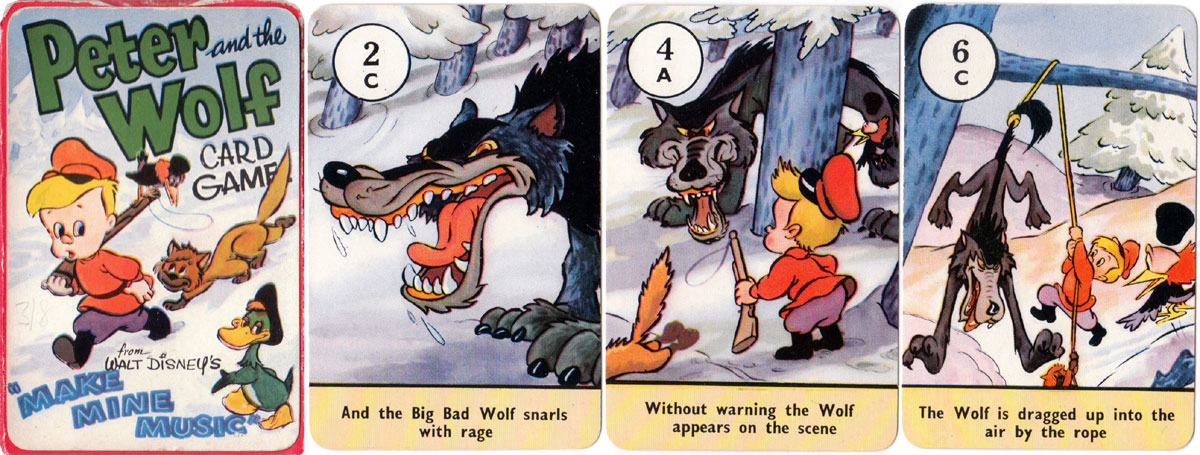
Above: Peter and the Wolf devised by Ern Shaw, 1947.
The first Wu-Pee game, an economy pack with square corners and smaller than the normal cards, made up the year’s card games. I Commit appeared around this time. At first the game appeared with realistic police constable cards which obviously matched the style of all the other cards in the pack. Later, I’m not sure when, he was replaced with a caricature police constable with PC 49 on his collar and apparently by a different artist and the box design was revised as well.
TELEVISION INFLUENCES
Originating from the emerging Children’s Television the next game was Muffin, the naughty mule puppet. Ern Shaw devised another game for Pepys in this period called Sylabex, a syllable word game, at first in a double sized lid and bottom type box with 72 cards, but later, in at least another two editions, in the usual flip top box with 44 cards. This game was reissued much later by Gibsons as Wordmaker.
MANAGEMENT BUY OUT
Kenneth Collins bought Castell Bros from William Collins Sons & Co Ltd in 1950 and transferred the whole business to St Cross St, Hatton Garden in London, many of the staff moving too.
1950 was the year of Contraband which was to become one of the most popular Pepys games of this period. Later editions (I have detected at least three more) have red backs and the duty amounts printed on the cards. The most recent variation had a different box and card back design.
The new version of Wu-Pee called Disney Wu-Pee was in the same economy format as the first one. The first of the games with an Enid Blyton connection came too. This was Faraway Tree based on some of the famous Blyton books about a colony of fairy folk who live up a tree.
A steeplechase game called ‘Chase’ was one of the first of what Pepys christened their Double Feature games. This meant that the game had something extra to a normal pack and ‘Chase’, designed by McLauchlan, had a paper race track and five card horses as well as the cards and was packed in a larger size box, as were all the Double Feature games. (Another steeplechase game ‘Horse Racing To-night’ uses dice instead of cards). Donald's Circular Snap, which used Disney characters again certainly was an oddball, I don’t recall ever seeing another circular card game. It was made from the same inexpensive board that was later to be used for the small number of cheaper range card games which Pepys introduced. A more conventional card game was Famous Five (the first edition). A new version of Snow White, much more closely based on scenes from the Disney film and looking more modern for the young things of the 1950s, was introduced around 1951 see more →
GIBSON GAMES DISTRIBUTE THE GAMES
Perhaps with a slightly older market in mind, Win-a-Lot, another “Double Feature” game was introduced. Only 26 cards seemed a bit mean but there was also currency, share certificates and an indicator board. There were two versions of Win-a-Lot eventually, the first with a short indicator board and the second with a longer, more elaborate board and slightly altered rule book marked “Second and Revised Edition”. There was also a de luxe edition in a red flock box. All the cards, money and certificates were the same apart from the certificates worth five shares. This game will appear later but renamed.
I wonder if, when they introduced Woodland Happy Families and Woodland Snap, they realised just how popular these would be. The earliest editions of Woodland Snap with a white rules booklet show three mice with four of Racey Helps “Woodland” series books (published by William Collins & Sons Co Ltd; who else?). Some of the earliest Woodland Happy Families issued had apparently completely randomly coloured panels at the top of the cards. Very soon the panels were improved so that each family had its own colour. A further “Double Feature” game called Skid-O, this time based on speedway, was the last of 1951 and now a speedway track and riders were provided.
Farmyard Cries was the next game in 1952, and, in my opinion, one of the wittiest. The cards were designed again by Racey Helps, each with an anthropomorphic cartoon and full of details in the background to add to the fun – excellent value! Just William was drawn by Thomas Henry who illustrated the “Just William” books by Richmal Crompton. The Walt Disney film “Alice in Wonderland” was released in 1951, but that title had already been used for a card game by De La Rue, so Pepys had to use the name Alice for their game based on the film.
Dan Dare was issued in 1953. The artist for the original “Dan Dare” was, of course, Frank Hampson who was one of the founding team of “Eagle”. Pepys call Fishing a card game so it is here, but it’s really a board game. It has 25 small cards and 34 tiny cards like tiles and is played on a paper “board”. Riders of the Range again based on an “Eagle” comic strip and its hero, Jeff Arnold, also came out this year. Again Pepys only say “by the brilliant Eagle artists” but I can tell you that the artist was Frank Humphries.
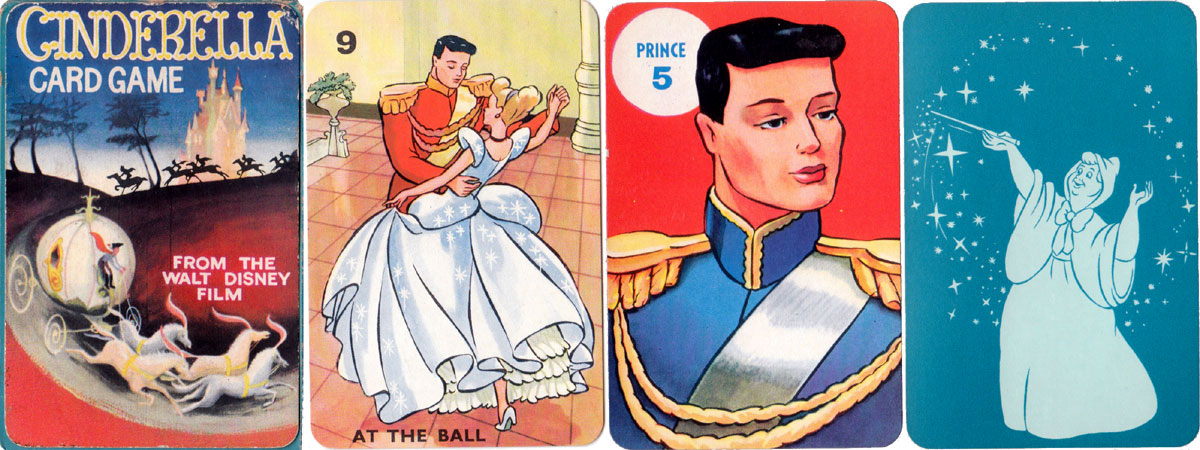
Above: Cinderella, 1954►
Another Disney based game, Cinderella, was one of the first in 1954, and it’s a particularly good one. The standard of both the artwork and the printing is superb. Also Alison Uttley’s famous Little Grey Rabbit books provided a new subject for Little Grey Rabbit which was another example of the kind of quality game that Pepys was capable of producing.
SOME ECONOMY GAMES
These card games must have made many a child very happy when they opened their birthday or Christmas presents. Of course, less fortunate children may have had to make do with cheaper games which were readily available from manufacturers like Tower Press and Clifford. At around this time in the early 1950’s Pepys introduced some new economy games to try to include some of these buyers among their customers. The first was Circus Snap and this had only 36 cards and was made from a cheaper quality board and box. It was designed to sell at only 2/6d, the same price as the Wu-Pee games of earlier, instead of the usual 3/9d for all the other single pack games. For the money however, it represented good value. Flight was another of those slightly mysterious anonymous games. It was advertised in the rules booklets of other branded Pepys games but the game itself has no identification on it.
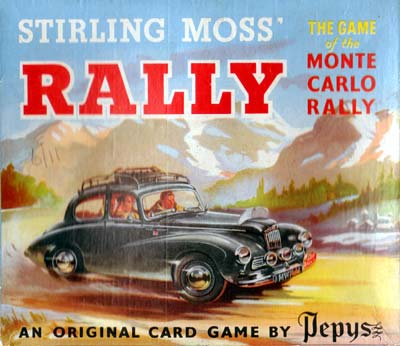
Above: Rally, 1955.
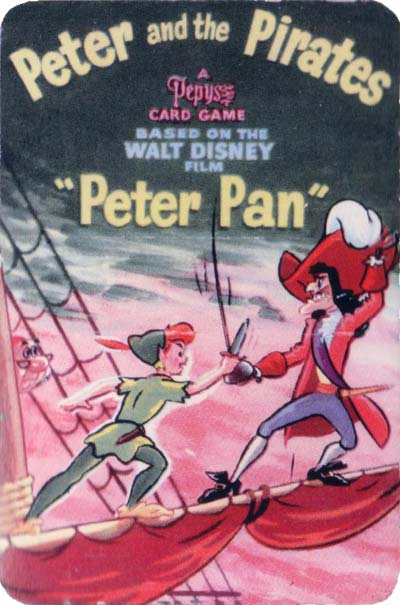
Above: Peter and the Pirates, 1955.
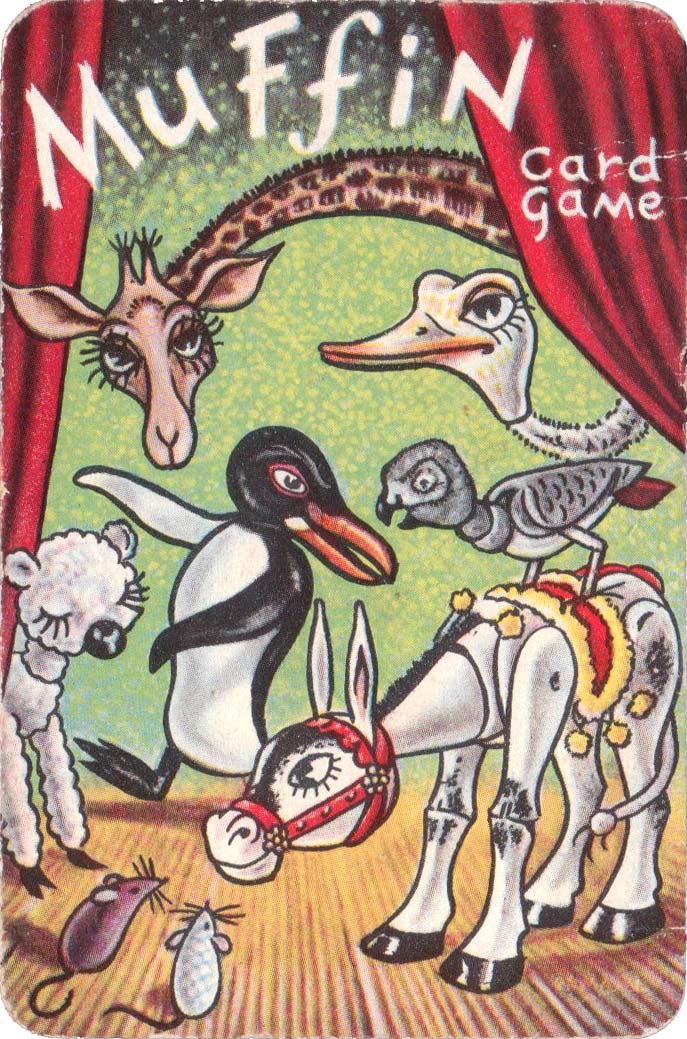
Above: Muffin drawn by Neville Main, 1951.
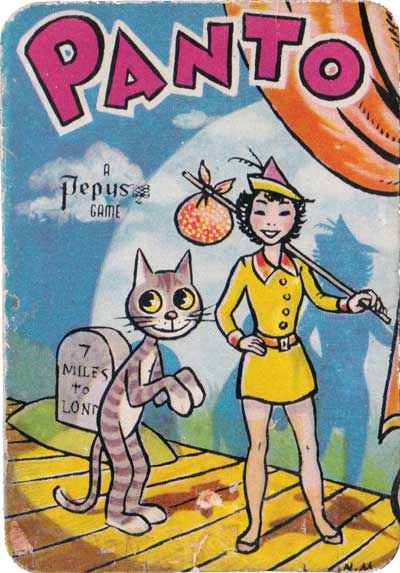
Above: Panto drawn by Neville Main, 1956.
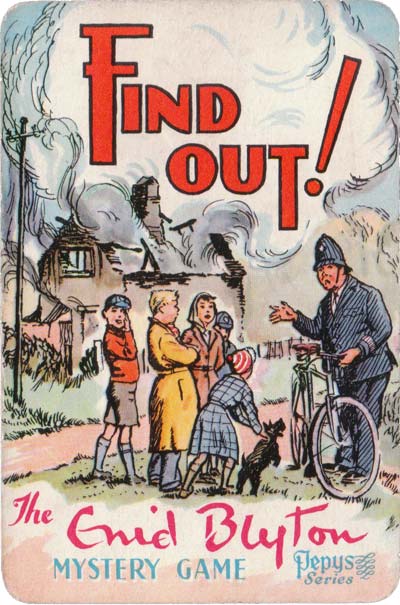
Above: Find Out, 1958.
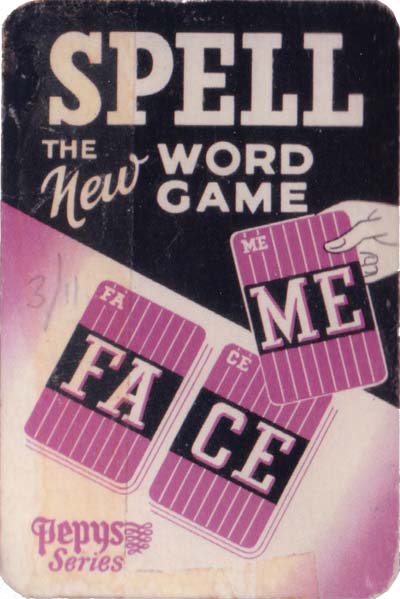
Above: Spell, 1958.
The first edition of Happy Families of the World was another of the economy 36 card games and probably sold very well because there seem to be a lot around even now. Although the rule card lists Norway among the families they are not there, instead there is a family from Spain. Later on Pepys used the same families plus two extra for a 44 card game called Happy Families of the Nations.
Further Double Feature games had been planned and the next to be issued was Rally, these cards were all designed by the “Motor” magazine’s artist known as Lane.
1955 saw the issue of Biggles a game based on the books by Capt W E Johns. Leslie Stead illustrated more than 90 of Capt W E Johns’ books and he also designed these cards. The old game Express was redrawn and redesigned for 1955 and the stations were reduced to the size of normal cards. The trains were brought up to date with the new liveries of the four new British Railways regions.
SOMETHING FOR THE GIRLS
Returning to the world of comics for inspiration Pepys next issued Girl, which was a game with characters from “Girl”, the companion comic to “Eagle”. Off the press next was Jungle Thrills, definitely not politically correct today but maybe at the time it was acceptable. The idea of the game is to “bag” as much game as you can whilst on safari. Pepys were to issue this game later with a very different image.
Good old reliable Disney provided another super game in Peter and the Pirates which was based on the film “Peter Pan”. The next game, although not the first TV game, is a sign of things to come: Pets endorsed by George Cansdale. This is another game that Pepys will recycle later. By this time the original game of Belisha had been out of print for some time so Pepys thought it would be a good idea to revive it for the next generation, after all, it had been a very big seller. I think they did a pretty good job with a game evocative of the 1950s called Round Britain. Scouting appeared in 1955 but the Girl Guides had to wait a little longer for their own card game: Guiding. Another Enid Blyton game was published as well called Secret Seven appropriately enough based on the old game Sevens. The artist for these cards was Bruno Kay who drew illustrations for the middle period of the Secret Seven books. A. B. Bowbeer, one of the artists who worked for “Flight” magazine, drew the cards for the new “Double Feature” game Test Pilot which was endorsed by Neville Duke the chief test pilot for Hawker.
TELEVISION AND FILMS
Disney again provided a subject in 1956 for Pepys to use in Davy Crockett based on their film of the same name. The cards are scenes from the film. An unusual and rare game called Panto in the economy series with only 32 cards was drawn by Neville Main. Pairs of the cards make up pictures of pantomime characters on stage. A further economy game with 34 cards was Punch and Judy also by Neville Main.
Robin Hood was based on the television series starring Richard Greene which ran from 1955 to 1958. The cards show scenes which appear to be taken directly from the screen. Safari in the same year was a reissue, with subtle differences, of Jungle Thrills. This time the game was endorsed by the famous naturalists Armand and Michaela Denis who had a very popular TV series throughout the 1950s.
The next game was Happy Families of the Nations which was a reissue of the older Happy Families of the World but in the usual full size cards, with eleven families instead of nine. I don’t think that this sold very well because the game seems to be pretty rare today.
1957 saw the release of Round Europe obviously intended as a companion game to Round Britain. The cards have some really evocative pictures of the times. The rules are printed on paper sheets much larger than usual with a map on the back of both sheets used to follow your route during the game. One of the most ingenious games is Secret Agent with the famous Magic Monocle. There are secret messages on some of the cards which can only be read using the monocle which is a cardboard cut-out with a red viewing window; another good idea for a game.
Double Feature games were not forgotten this year with the introduction of Stocks and Shares. This was Win-A-Lot reissued with a few differences. At first the £1 tokens were coins like those in Win-A-Lot but later in a second edition a paper £1 note was used and although the 1951 date on the share certificates was not changed the company names were. Racey Helps drew another game for Pepys with Woodland Old Maid. The Old Maids are splendid owls and the rules are on a card not in a book. Finally the word game Spell came along in its first edition and a further three editions at least followed later. Find Out based on the “Find Outers” books by Enid Blyton came out in 1958.
1960 brought the football game Goal into the shops. It quickly went out of date however as the inconsiderate football clubs changed their playing strip and the game had to be revised with the six changes amended. A real surprise came next. The football game Penalty was originally published in Italy by Ernesto Scola of Milan and it turned up here in the UK in 1960 issued by Pepys. MB Games still make a version of it today called “Kick Off”.
OLD JAQUES GAMES REINTRODUCED
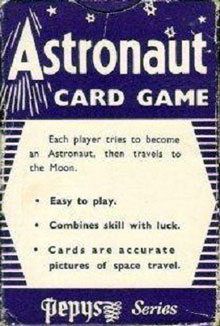
Above: Astronaut, celebrating the arrival of space travel, 1960s.
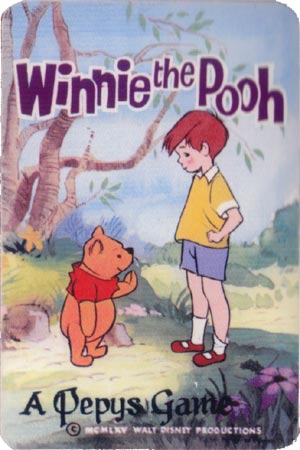
Above: Winnie the Pooh, from the story by A. A. Milne, 1965.
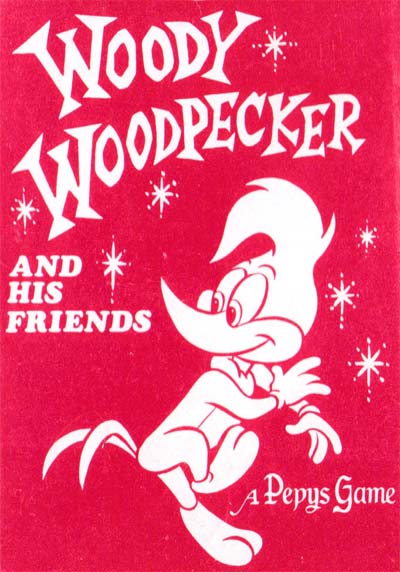
Above: the 1975 Pepys game "Woody Woodpecker and His Friends"►
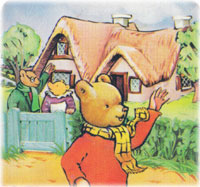
Above: Rupert, 1973.
Two old traditional games were issued in the range in 1960. Jaques Original Snap and Jaques Original Happy Families appeared with some of the Tenniel drawings from the 1860’s games by Jaques. Wild Flower Sevens was introduced and would prove to be an enduring success with steady sales up to today. I am not sure but strongly suspect that the artist who later drew Garden Flowers also drew these cards. She was Dora Ratman. Also offered was Foreign Legion, a game with the novel idea of a map in four sections on four cards. The “Double Feature” game was Wimbledon with a tennis court and small extra cards and coming with the endorsement of Fred Perry. To celebrate the arrival of space travel Pepys introduced a space game, Astronaut, with pictures of Russian and American spacecraft. British Towns was a game which used a very old set of rules namely those from “Counties of England”, with a few differences. The cards were also quite an unusual design. Cards with three different pictures had been used before in Girl but now they were used for The Car Game with a selection of interesting cars from different times; none later than 1961 of course. A new version of Kargo was redrawn and repackaged and put in a posh box in the “Double Feature” range at a higher price. It was called Card Golf. Most of the copies you will encounter have now lost their little golf balls.
Garden Flowers, as I have already mentioned, pictured by Dora Ratman, must have been a welcome addition for those who like that sort of thing but I prefer the next game; Round the World. It is played like Speed, with the Comet cards acting like the Lightning cards. A second edition of Round the World was issued in the late 1960s when Concorde first flew and this aircraft was substituted for the Comet. A good old fashioned game of cowboys and outlaws came on the market in the form of Wild West with very fine pictures and lots of fun.
YOUNGER CHILDREN
Animal Snap was one of the few games for very young children and although there had been some before this it was probably one of the areas that had been a bit neglected. Another animal game was also issued, Family Favourites, which was a reissue of the old Pets game but without the George Cansdale connection. The cards were exactly the same but the rules were reprinted and a new box designed. Some really superb paintings were used for Trains which Pepys said were by Ian Allen.
The second edition of Happy Families of the World was also published in 1962 but it was no revamped game this time. It has some rather good pictures completely different from any preceding Happy Families game. The only photographic card game was Wild Life. The photographs were taken by Philip Wayre at his Norfolk Wildlife Park at Great Witchingham near Norwich.
The Planes Game was the third game with three pictures on most cards, issued in 1965. Also this year was a great Disney game Winnie the Pooh which was every inch a top quality children’s game with superb pictures. The last Double Feature game, Channel X was issued in 1966 and showed Pepys awareness of modern TV advertising on the new commercial channel.
A final Disney inspired game was Jungle Book which was the only game published in 1967, and frankly it wasn’t very exciting. British Birds published in 1968 is still on sale today so it must be a steady seller. Perhaps to revitalise their range Pepys turned to MGM for a new game. Tom & Jerry Snap was issued in 1972, another game for young children. 1972 was the year that Rupert was first issued, a very nice game with the famous bear from the Daily Express newspaper. This must have been popular as the game was reissued in 1981 and 1984.
Legs Eleven was the only game produced in Hong Kong and it even had square corners. This could well have been by way of an experiment, which seems not to have been a success. 1974’s two other offerings were The Perishers based on the TV cartoon series and Woody Woodpecker based on the Walter Lanz cartoon characters, also a children’s TV series.
THE LAST CHAPTER
Historical note. In 1960 Nancy Collins, the wife of Kenneth Collins the MD of Castell Brothers, became MD of E J Larby Ltd when the owner Earnest Larby retired. He sold E J Larby to Kenneth and Nancy Collins and the offices were combined with those of Castell Brothers Ltd. The companies were merged to form Castell Larby. In 1973 anticipating his retirement, the company was sold to Graphics Publicity Ltd with Kenneth staying on for two more years. The company was sold again in 1977 not doing very well. The buyer was T J & J Smith Ltd who produced Dataday diaries and were a competitor with Pepys in that market. After huge losses 2 years running the company was closed and remained moribund until it was finally disassociated in 1983. At that point H P Gibson acquired the existing range of games in 1984.
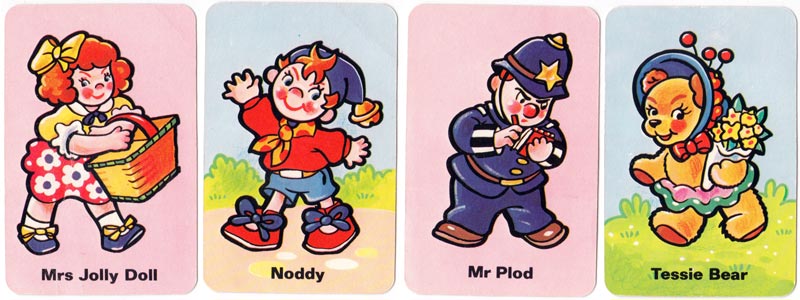
Above: Noddy Snap, 1975.
In 1975 there was only one game published, Noddy Snap (above), again based on a children’s TV series and intended for the very young. 1977 was the year of Fred Basset who first appeared in a cartoon strip in the Daily Mail in 1963. The last throes of the company were The Famous Five, a second edition completely redrawn (and gaining absolutely nothing from it) in 1975 and also Rupert was reissued, both tied in with TV series. After that no further trading was carried on until finally in 1983 Castell Bros was disassociated.
H P Gibson & Sons Ltd (at last a games manufacturer) bought the rights to the existing range of Pepys games. They renamed Sylabex as Word Maker and added two new games to the range in 1984 based on the famous Beatrix Potter children’s books. These were the reasonably good looking Peter Rabbit and Beatrix Potter’s Rummy. All these were published by Gibson under licence from the copyright owners. The earlier ones without Bar Codes were issued late 1970s to 1984 when the bar code appeared on the boxes. The Original Jaques Snap and Happy Families also were issued under licence at the time. Just three more games would appear, two of them were based on what were originally De La Rue games of around 1900. These were Alice in Wonderland and Peter Pan both of them with reduced numbers of cards from the originals. The third game was a new version of Speed being the 15th edition completely changed from the 14th with all new pictures and backs designed by Mark Bromley. It is a good job that Gibsons rescued the old Pepys games or perhaps they would have disappeared for ever. As it is our grandchildren can still enjoy a Pepys game like we did years ago.
Article text and images courtesy Rex Pitts.
Pepys card game titles include: Alice • Animal Snap • Astronaut • Belisha • Biggles • British Birds • British Towns • Car Game • Card Golf • Channel X • Cinderella • Circus Snap • Combat • Contraband • Crime Club • Dan Dare • Davy Crockett • Dominoes • Donald's Circular Snap • Dumbo • England Expects • Express 1st edition • Express 2nd edition • Family Favourites • Famo • Famous Five • The Faraway Tree • Farmyard Cries • Film Fantasy • Find Out • Fishing • Flight • Foreign Legion • Fred Basset • Garden Flowers • Girl • Goal • Guiding • Gulliver’s Travels • Happy Families of the Nations • Happy Families of the World (2nd edition) • I Commit • International Football Whist • It’s a Goal • Jack of all Trades • Jungle Book • Jungle Thrills • Just William • Kargo (Kum-Bak) • Kargo (Pepys) • Legs Eleven • Little Grey Rabbit • Menuette • Mickey and the Beanstalk • Mickey's Fun Fair • Muffin • Panda’s Party • Panto • Penalty • The Perishers • Peter and the Pirates • Peter and the Wolf • Peter Pan • Pets • Picture Dominoes • Pinocchio • The Planes Game • Progress • Punch and Judy • Rally • Riders of the Range • Robin Hood • Round Britain • Round Europe • Round the World • Rupert • Safari • Scouting • Secret Agent • Secret Seven • Shuffled Symphonies • Skid-O • Snow White and the Seven Dwarfs (1st edition / 2nd edition) • Speed • Spell • Stocks and Shares • Sylabex • Test Pilot • They're Off • Tom & Jerry Snap • Trains • Vacuation • Victory • Wild Flower Sevens • Wild Life • Wild West • Wimbledon • Win-a-Lot • Winnie the Pooh • The Wizard of Oz • Woodland Old Maid • Woodland Snap • Woody Woodpecker • Word Maker • Wu-Pee.
Of the above titles, the following have been re-published by Lagoon Games: Astronaut • Card Golf (renamed "Hole in One") • Contraband • England Expects • Express • Flight • I Commit (renamed "Accused") • Penalty (renamed "Goal") • Rally • Round Britain • Round Europe • Test Pilot • The Car Game • They're Off (renamed "Derby Day") • Wimbledon (renamed "Grand Slam"). See Display Case►
See also: Perma Playing Cards • Scottish Tartan Playing Cards • Zodiac Club Playing Cards→
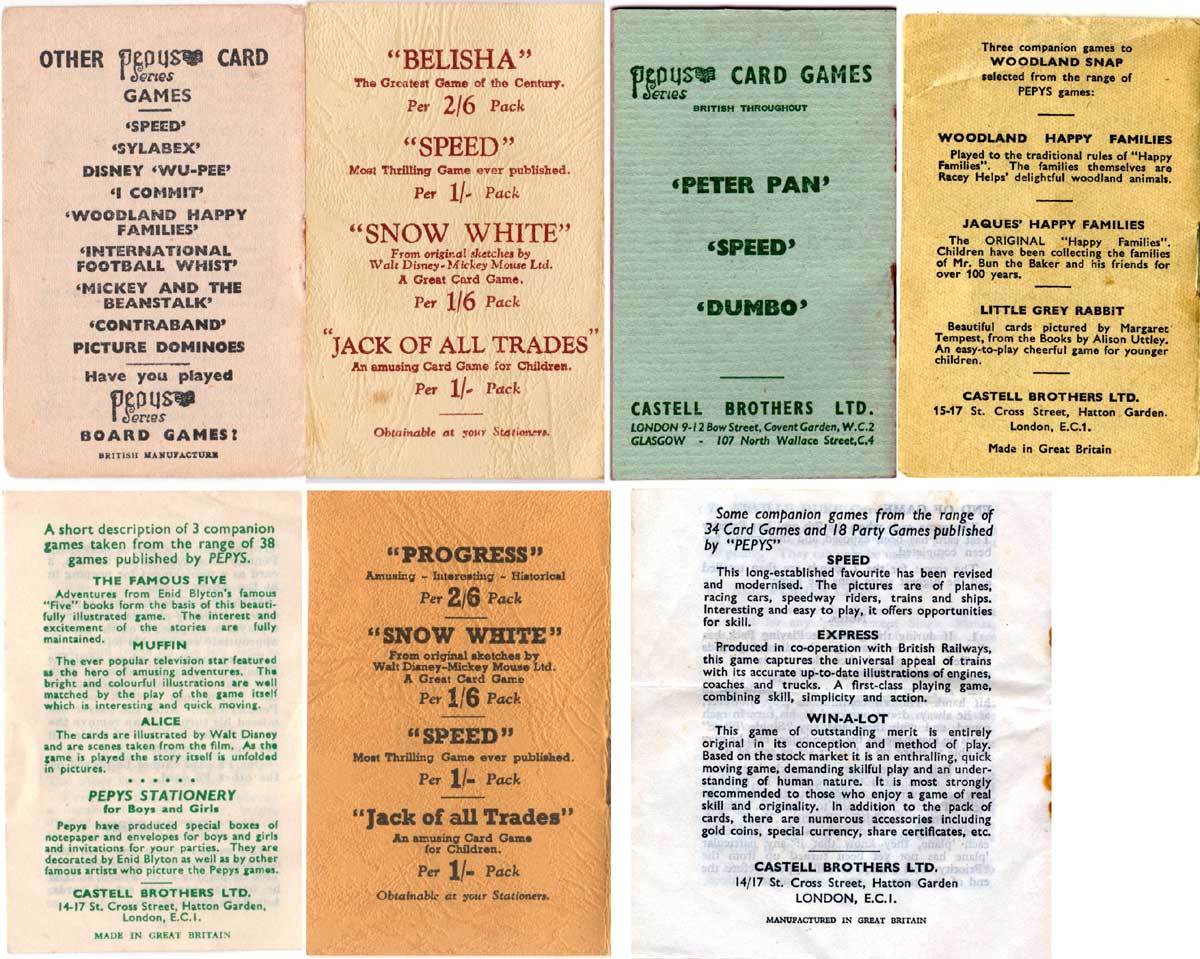

By Rex Pitts (1940-2021)
Member since January 30, 2009
Rex's main interest was in card games, because, he said, they were cheap and easy to get hold of in his early days of collecting. He is well known for his extensive knowledge of Pepys games and his book is on the bookshelves of many.
His other interest was non-standard playing cards. He also had collections of sheet music, music CDs, models of London buses, London Transport timetables and maps and other objects that intrigued him.
Rex had a chequered career at school. He was expelled twice, on one occasion for smoking! Despite this he trained as a radio engineer and worked for the BBC in the World Service.
Later he moved into sales and worked for a firm that made all kinds of packaging, a job he enjoyed until his retirement. He became an expert on boxes and would always investigate those that held his cards. He could always recognize a box made for Pepys, which were the same as those of Alf Cooke’s Universal Playing Card Company, who printed the card games. This interest changed into an ability to make and mend boxes, which he did with great dexterity. He loved this kind of handicraft work.
His dexterity of hand and eye soon led to his making card games of his own design. He spent hours and hours carefully cutting them out and colouring them by hand.
Related Articles

Rap Rummy
Rap Rummy made by Parker Brothers in 1926, only 4 years after the discovery of King Tutankhamen’s to...

Batman® playing cards
Batman playing cards published by InterCol of London 1989.

Can You Believe Your Eyes?
“Can You Believe Your Eyes?” playing cards featuring visual illusions & other oddities.

Pastime Playing Cards for the Blind
The “Pastime” Playing Cards for the Blind manufactured by Goodall & Son Limd., c.1910.

The European Interchanges Quartets
A card game based around motorway intersections from European countries.

Songs with Flute accompaniment
Eighteenth century English engraved cards with music for voice and flute.

Love Tests
Vintage novelty “Love Test” cards of a slightly saucy nature but all in good fun!

Briefmarken-Quartett
Quartet game featuring postage stamps from the Zones of Occupation in post-WWII Germany.

Ben 10 playing cards
Characters from the American animated television science fantasy series Ben 10.

Doctor Who Trump Card Game
Game for two players in which Doctor Who and the Legendary Legion join battle with the Alien Hordes....

Disney’s Aladdin playing cards
Characters from the 1992 Disney film Aladdin.

2011 Worshipful Company Pack
Celebrating the bicentenary of the birth of Charles Dickens, with characters adapted from drawings b...

Jockey Club de Buenos Aires
Spanish-suited pack by Chas Goodall & Son Ltd for the Jockey Club, Buenos Aires.

New interest in old games
Games once fashionable are now eclipsed by quicker gratifications.

Polygo™
Cards of irregular, four-sided shape for playing word and colour games as well as more traditional o...

Treasures from the Bodleian Library
Rare books, manuscripts, music scores, portraits, maps, gospels, chronicles and other valuable artef...
Most Popular
Our top articles from the past 28 days


